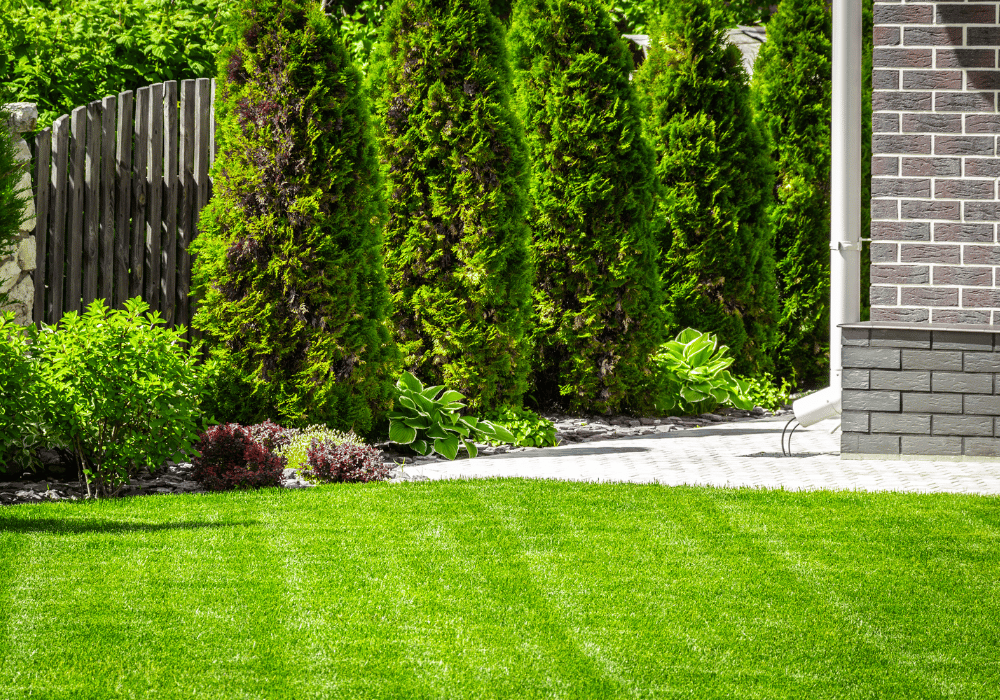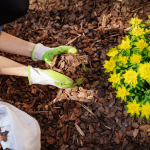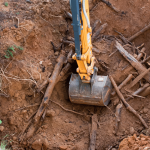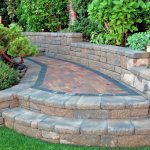Achieving a lush, vibrant property goes beyond hardscaping features like patios and walkways. Softscaping, which includes the addition of plants, trees, shrubs, and other organic elements, is key to transforming any outdoor space into a balanced, sustainable environment. It’s not just about beauty—softscaping enhances a property’s health, promotes environmental benefits, and adds lasting value to your landscape. This blog explores why softscaping is an essential secret to a healthier, greener property and how it can positively impact your outdoor space.
Enhancing Your Property’s Aesthetics Naturally
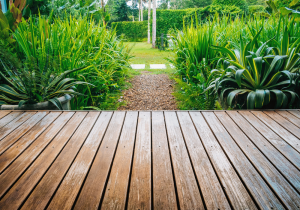 Softscaping adds vibrant, organic touches that elevate a property’s visual appeal. Trees, flowers, and shrubs introduce a natural balance to hardscape structures, softening harsh lines and creating a seamless flow throughout the landscape.
Softscaping adds vibrant, organic touches that elevate a property’s visual appeal. Trees, flowers, and shrubs introduce a natural balance to hardscape structures, softening harsh lines and creating a seamless flow throughout the landscape.
Imagine a backyard filled with stone pathways framed by lush greenery and colourful blooms. Strategic plant placement not only beautifies the space but also creates depth and dimension, making even smaller areas feel expansive. Softscaping also allows homeowners to personalize their property, choosing plants and arrangements that reflect personal style or seasonal charm.
Furthermore, softscaping ensures the landscape changes and evolves over time. A flowering tree that matures year after year or a plant bed that adapts with seasonal growth adds a dynamic quality to the property. This natural evolution turns your yard into a living masterpiece that continues to grow in beauty as the years pass.
Improving Environmental Health and Air Quality
Softscaping isn’t just about looks—it plays a significant role in improving the environment. Plants naturally filter the air by absorbing carbon dioxide and releasing oxygen, creating a healthier atmosphere for you and your family. Trees and shrubs also act as natural air purifiers, filtering out pollutants like dust, soot, and harmful chemicals.
Softscaping can also mitigate the urban heat island effect, often found in residential neighbourhoods filled with hard surfaces like concrete and asphalt. Grass, trees, and plants reduce surface temperatures by providing shaded areas and absorbing sunlight. This cooling effect makes outdoor spaces more comfortable while lowering the energy demands for air conditioning.
Additionally, softscaping promotes a healthier water cycle. Plants mitigate soil erosion, improve water infiltration, and reduce runoff pollutants that often enter local water systems. This natural water filtration is essential for maintaining the ecological balance, especially in urban and suburban environments.
Supporting Local Ecosystems and Biodiversity
Softscaping supports the natural ecosystem by creating habitats and food sources for local wildlife. Trees and shrubs provide nesting spots for birds, while flowering plants attract pollinators like bees and butterflies. This boost in biodiversity maintains the balance of the environment and supports the health of the surrounding landscape.
By carefully selecting native plants for softscaping, homeowners can further support local species and encourage sustainable growth. Native plants are naturally adapted to the local climate, thriving with minimal maintenance and requiring less water or chemical fertilizers. These low-maintenance additions enrich the soil, protect native pollinators, and contribute to a harmonious environment.
For properties located in urban areas, softscaping can serve as a small but impactful ecological refuge. Even modest additions like a flower bed or a single tree can provide homes and nourishment for wildlife, bridging the gap between developed spaces and nature.
Reducing Maintenance with Sustainable Landscaping
Softscaping is often perceived as labour-intensive, but when done right, it can actually reduce the long-term maintenance required for a property. Sustainable landscaping practices like xeriscaping—using drought-resistant plants—minimize watering needs and free up your time from constant garden upkeep.
Properly planned softscaping also reduces the reliance on mowing, fertilizing, and pest control. Replacing large patches of lawn with plant beds or ground cover eliminates the need for high-maintenance grass while still creating a visually appealing setting. Integrated softscape elements such as mulch also help retain soil moisture, reducing water usage and protecting plant roots.
By focusing on sustainable practices, softscaping can save money on water bills and landscaping services. It’s an environmentally friendly option that adds convenience while boosting your property’s health and beauty.
Enhancing Property Value and Curb Appeal
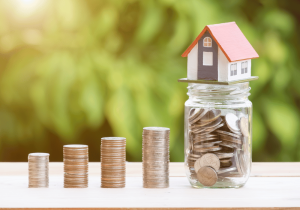 A well-designed softscape can significantly increase a property’s resale value. Buyers are often drawn to homes with thoughtfully landscaped yards, where softscape elements provide an inviting sense of comfort and visual appeal. A vibrant yard indicates that the property has been well cared for, further motivating potential buyers.
A well-designed softscape can significantly increase a property’s resale value. Buyers are often drawn to homes with thoughtfully landscaped yards, where softscape elements provide an inviting sense of comfort and visual appeal. A vibrant yard indicates that the property has been well cared for, further motivating potential buyers.
Curb appeal is another critical factor in value enhancement. Softscaping transforms an ordinary yard into a stunning first impression with lush greenery, vibrant flowers, and strategically planted trees. Eye-catching softscape features set the tone for the entire property, appealing to anyone passing by or coming for a visit.
Beyond resale value, softscaping also offers immediate benefits to current property owners. A beautiful yard provides a relaxing retreat, perfect for unwinding, hosting outdoor gatherings, or simply enjoying nature from the comfort of your home.
Achieving Balance Between Hardscaping and Softscaping
Finding the right balance between hardscaping and softscaping is the key to creating a harmonious landscape. Hardscape features like patios, retaining walls, or walkways provide structure and functionality, while softscaping adds the life and vibrancy that truly bring your outdoor space to life.
A professional landscaping service can help create an integrated design where softscaping complements existing hardscape elements. For instance, cascading plants can soften the appearance of stone walls, and trees can provide shade over seating areas. This functional and aesthetic balance ensures your landscape is visually appealing and practical for everyday use.
Softscaping is more than just a decorative element—it’s the secret to creating a healthier, greener property that benefits both homeowners and the environment. By improving aesthetics, supporting ecosystems, and enhancing sustainability, softscaping transforms outdoor spaces into thriving, functional retreats. Whether you’re redesigning your entire yard or making small updates, investing in softscaping can have a lasting impact on your property’s beauty, health, and value. To get started, consult with a professional landscaper to develop a softscaping plan tailored to your needs and local climate.

